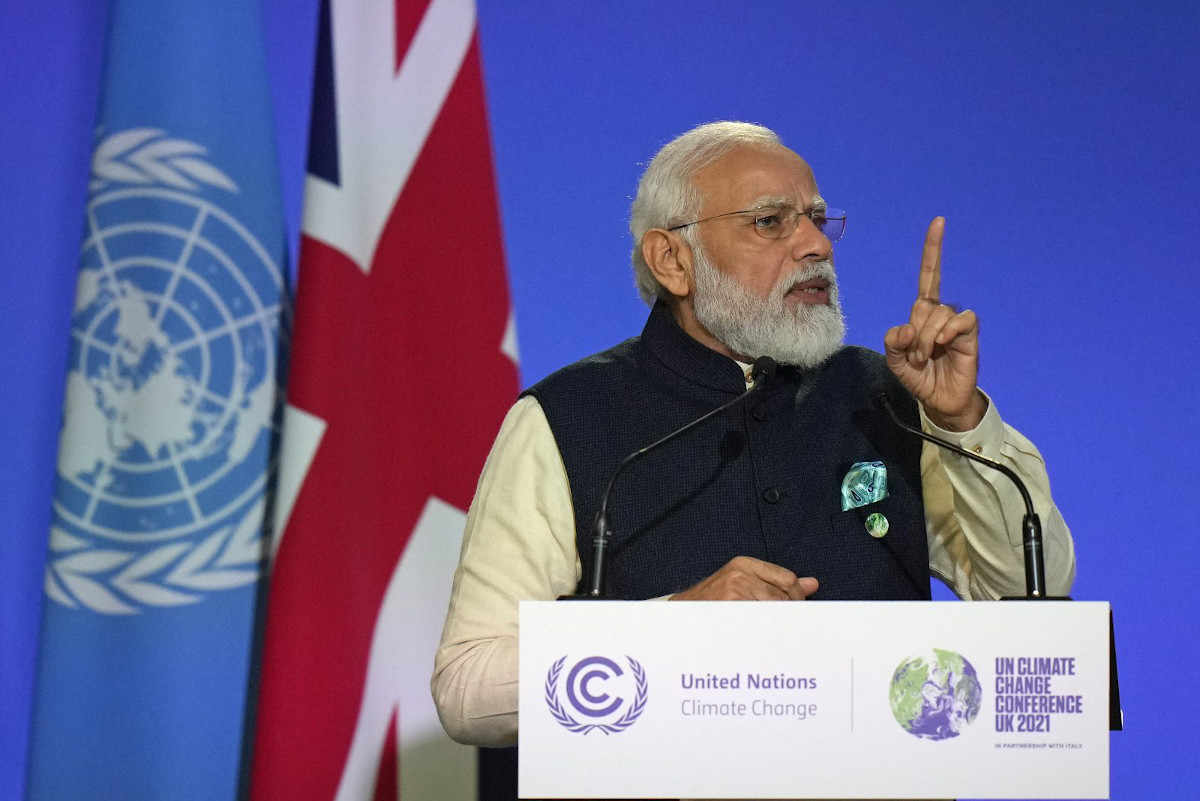India has set a target of achieving net-zero emissions by 2070, Prime Minister Narendra Modi announced Monday at the 26th session of the U.N. Conference of the Parties in Glasgow.
As part of its surprising new pledge, Modi said that India would aim to generate 50 percent of its power from renewables and reduce carbon emissions by 1 billion tonnes by 2030.
The impact of these commitments would be significant: India — home to 17 percent of the world’s population — is the third-largest carbon dioxide emitting country in the world, after the United States and China.
“This announcement will shake Indian and global energy markets, and give a sense of much-needed long term certainty to the investors in the energy domain,” said Vaibhav Chaturvedi, author of a new study on the implications of a net-zero goal for India published by The Council on Energy, Environment, and Water, a public policy think tank based in Delhi, India.
Critics did point out that the net-zero target is 20 years behind the widely accepted and science-based 2050 target. Just two weeks ago, India was one of 24 countries that signed a statement criticizing global calls for net-zero by 2050 commitments, arguing that they are “against climate justice.”
During his speech in Glasgow, Modi also called on wealthier countries to make $1 trillion available in climate finance for developing countries “as soon as today.” Nations like the U.S. became wealthy early on by using fossil fuels to power their development. Now, countries like India feel the restrictions aren’t fair as they too try to develop.
The Council on Energy, Environment, and Water, or CEEW, estimates India’s cost of transitioning to net-zero by 2070 would be more than $14 billion between 2030 and 2100.
In comparison, the effects of climate change on the country would cost way more. In 2018 alone, India suffered economic losses totaling $37 billion from climate change impacts. Three-fourths of the county is a hotspot for extreme effects of climate change, from flooding to cyclones to droughts.
“There are real trade-offs in the transition process, more so for a low-income, fast-growing economy that has yet to peak its emissions and cannot compromise on its development aspirations,” Chaturvedi told Grist.
“The biggest near term challenge is in electricity market design and distribution sector reforms,” he said. According to his and his colleagues’ study, technology like carbon capture and storage and hydrogen use would be “critical” in meeting the 2070 goal.
“Things move slowly unless given a hard push,” Chaturvedi said. “The net-zero announcement is that hard push.”


